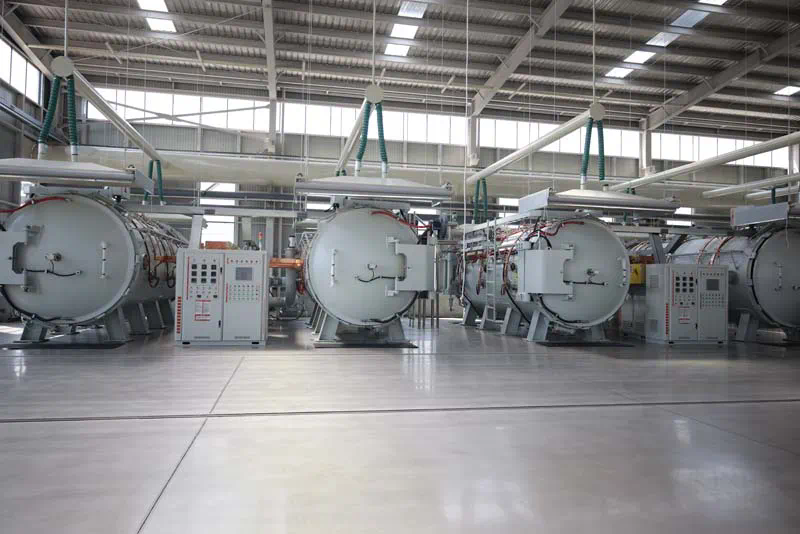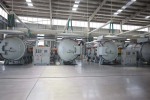The Role of Silicon Carbide in Modern Semiconductors
Silicon carbide (SiC) has emerged as a critical material in the field of modern semiconductors, reshaping the landscape of electronic devices and systems. This wide-bandgap semiconductor material offers significant advantages over traditional silicon-based devices, particularly in high-power, high-temperature, and high-frequency applications. Understanding the role of SiC in contemporary semiconductor technology involves exploring its properties, applications, manufacturing processes, and future prospects.
Silicon carbide is a compound of silicon and carbon with a crystalline structure that provides a wide bandgap of approximately 2.3 to 3.3 electron volts, depending on the polytype. This wide bandgap translates into higher breakdown voltage, thermal conductivity, and efficiency compared to silicon. These properties make SiC an ideal candidate for power electronics, RF/microwave devices, and high-temperature sensors.
Properties of Silicon Carbide
Wide Bandgap
One of the defining features of silicon carbide is its wide bandgap. The wide bandgap allows SiC devices to operate at higher voltages and temperatures than silicon devices. This characteristic is crucial for applications requiring high power density and thermal stability. Devices made from SiC can sustain higher electric fields before breakdown, reducing the need for overdesign and improving overall system efficiency.
High Thermal Conductivity
Silicon carbide boasts a high thermal conductivity, which facilitates better heat dissipation compared to silicon. Effective thermal management is essential in power electronics, where heat generation can significantly impact performance and reliability. The superior thermal conductivity of SiC helps in maintaining optimal operating temperatures, reducing thermal stress on the device, and enhancing its longevity.

High Breakdown Voltage
SiC’s high breakdown voltage is a key advantage for power electronics. Devices based on SiC can handle higher voltages without breaking down, which makes them suitable for high-voltage power conversion and transmission systems. This property is particularly beneficial for applications such as electric vehicles, renewable energy systems, and industrial motor drives, where efficient power management is critical.
High Saturation Velocity
The high saturation velocity of charge carriers in SiC allows for faster switching speeds in electronic devices. This feature is advantageous in RF/microwave applications, where high-frequency operation is required. Faster switching speeds contribute to improved performance in communication systems and radar technology.
Applications of Silicon Carbide
Power Electronics
SiC is predominantly used in power electronics, where its superior properties enhance performance and efficiency. SiC power devices, such as MOSFETs and Schottky diodes, are employed in various applications including power supplies, inverters, and converters. The high efficiency and thermal capability of SiC devices enable more compact and reliable power systems.
Electric Vehicles
In electric vehicles (EVs), SiC technology plays a crucial role in enhancing the efficiency of powertrains and charging systems. SiC-based power electronics reduce energy losses in the drivetrain, leading to improved range and performance. The ability to operate at higher temperatures also reduces the need for extensive cooling systems, further enhancing the efficiency of EVs.
Renewable Energy Systems
SiC devices are instrumental in renewable energy systems, such as solar inverters and wind turbine converters. The high efficiency and reliability of SiC power components contribute to better energy conversion and grid stability. SiC’s thermal management capabilities also improve the performance and lifespan of renewable energy equipment.
RF and Microwave Devices
Silicon carbide’s high-frequency capabilities make it suitable for RF and microwave applications. SiC-based devices are used in radar systems, communication satellites, and high-frequency amplifiers. The high saturation velocity and power density of SiC enable the development of more compact and efficient RF and microwave systems.
High-Temperature Sensors
SiC’s ability to operate at elevated temperatures makes it ideal for high-temperature sensing applications. SiC sensors are used in environments where conventional sensors would fail due to extreme heat. These sensors are employed in aerospace, automotive, and industrial applications where high-temperature measurements are critical.
Manufacturing Processes
Crystal Growth
The production of silicon carbide begins with crystal growth, typically using methods such as the Lely process, sublimation, or chemical vapor deposition (CVD). The choice of method affects the quality and characteristics of the SiC crystals. CVD, for example, is a widely used technique for producing high-purity SiC wafers suitable for semiconductor applications.
Wafer Fabrication
Once SiC crystals are grown, they are sliced into wafers for use in semiconductor devices. The wafer fabrication process involves polishing, etching, and doping to create the desired electrical properties. High-quality wafer fabrication is crucial for achieving the performance benefits associated with SiC devices.
Device Fabrication
The fabrication of SiC-based devices involves processes such as photolithography, ion implantation, and metalization. These steps are used to create the intricate patterns and structures required for functional semiconductor devices. Advanced fabrication techniques are necessary to fully leverage SiC’s properties and ensure device reliability.
Challenges and Future Prospects
Cost and Availability
One of the significant challenges facing SiC technology is the cost of raw materials and the manufacturing process. SiC substrates are more expensive than silicon, and the fabrication processes are complex and costly. As the demand for SiC devices increases, efforts are being carborundum silicon carbide made to reduce costs through improved manufacturing techniques and economies of scale.
Material Quality

The quality of SiC material is crucial for device performance. Variations in crystal quality can affect the reliability and efficiency of SiC devices. Research is ongoing to improve crystal growth techniques and enhance material purity to ensure consistent performance across different applications.
Integration with Silicon Technology
Integrating SiC technology with existing silicon-based systems presents both opportunities and challenges. Hybrid systems that combine SiC and silicon components can offer improved performance while leveraging established silicon infrastructure. However, achieving seamless integration requires addressing compatibility issues and developing suitable interfacing technologies.
Future Research Directions
Future research in silicon carbide technology is likely to focus on improving material properties, reducing costs, and expanding applications. Advances in crystal growth techniques, wafer processing, and device design will continue to drive innovation in the field. Additionally, exploring new applications and developing novel SiC-based devices will contribute to the growth of the semiconductor industry.
In conclusion, silicon carbide plays a transformative role in modern semiconductors, offering unparalleled advantages in high-power, high-frequency, and high-temperature applications. Its unique properties make it an essential material for advancing technology in various fields, from electric vehicles to renewable energy systems. Despite challenges related to cost and material quality, ongoing research and development are poised to further enhance the capabilities and applications of SiC technology, solidifying its position as a cornerstone of future semiconductor advancements.
https://devicesplayer.com/
